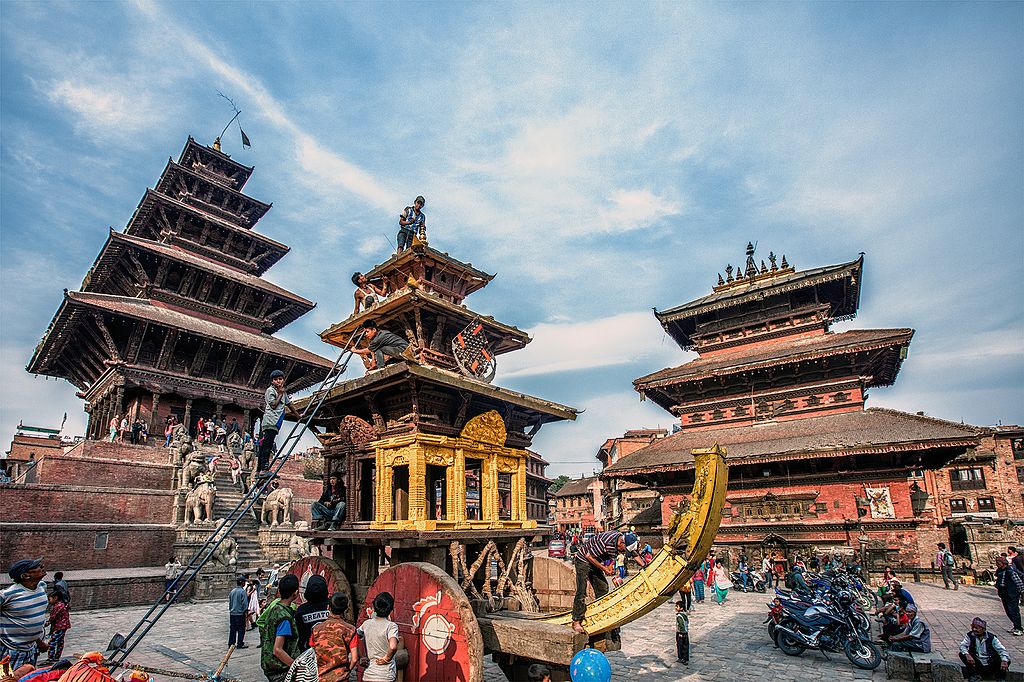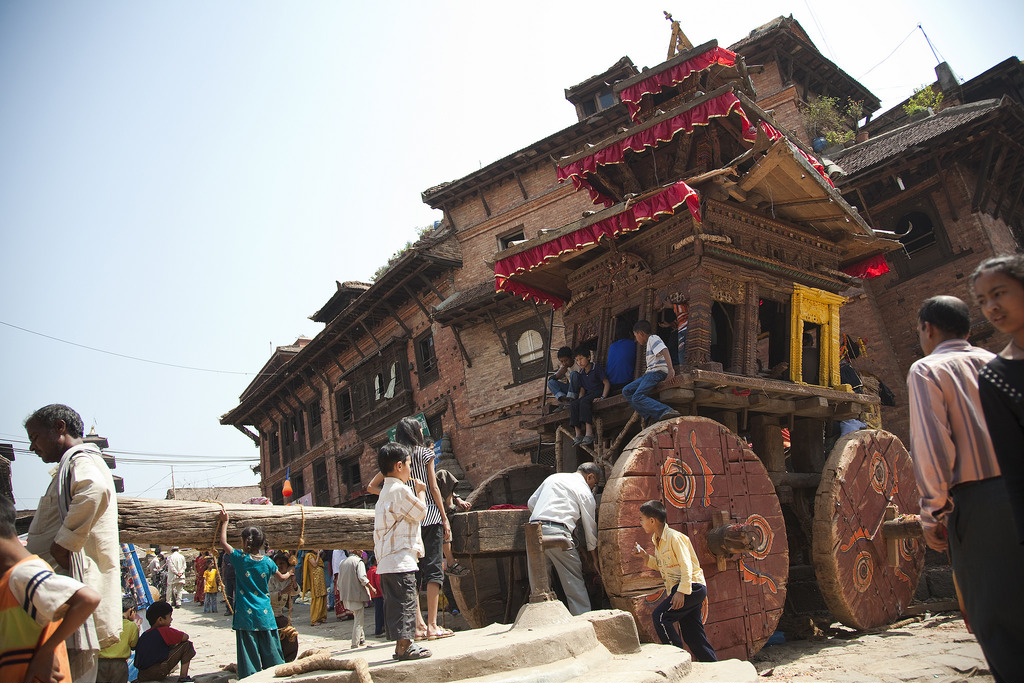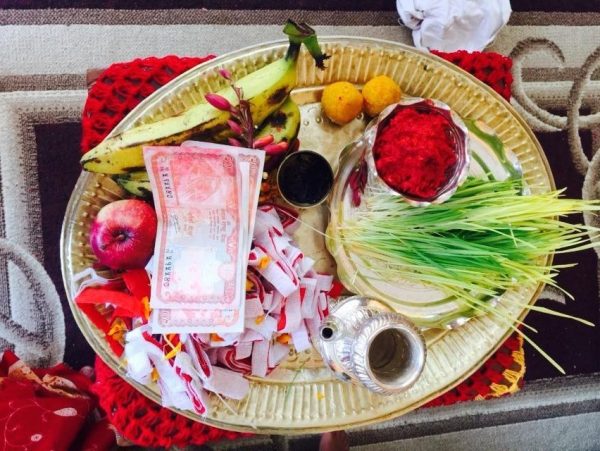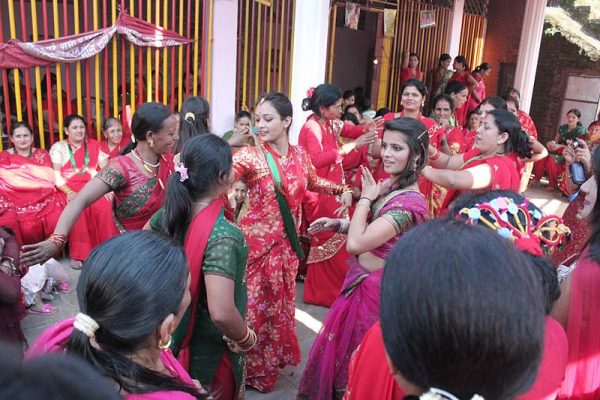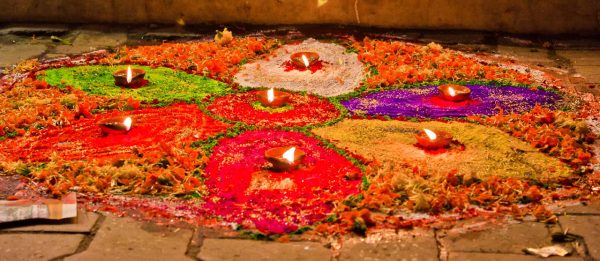Jatra’s carry huge religious importance among the Newars of Kathmandu valley. The Newar group of Kathmandu, Bhaktapur, and Patan has several jatras that they celebrate annually with sincere devotion and belief. The Newars of Kathmandu celebrator Indra Jatra as their main Jatras, Patan Newars celebrate Rato Machchhindra Jatra and the Newars of Bhaktapur follow Bisket and Gai Jatra. Both Bisket and Gai Jatra are celebrated as major jatras, and thousands of people gather at Bhaktapur durbar square to commemorate these jatras.
Bisket Jatra is a nine days long festival celebrated at the end of Chaitra. The Bisket Jatra signifies the end of a year and the start of a new year on the Bikram Sambat calendar. The jatra focuses on pulling chariots of two deities, the wrathful god Bhairav, and goddess Bhadrakali. A few days before the jatra, chariots are built in the Bhaktapur Durbar square and later pulled by local young people through the narrow streets of Bhaktapur.
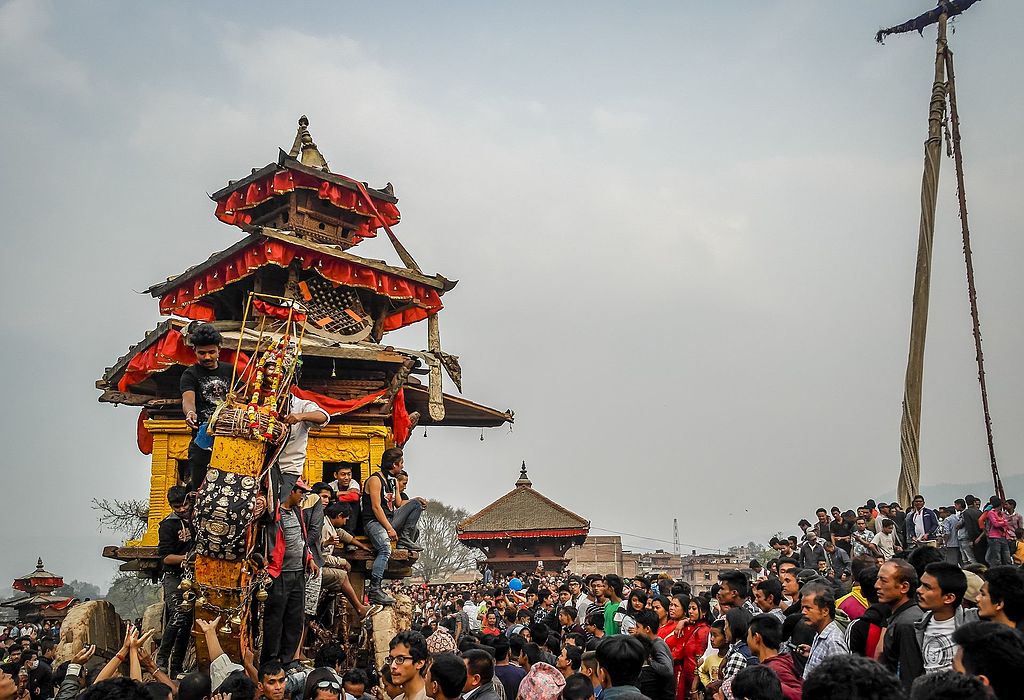
History of Bisket Jatra
The Bisket Jatra has several historical stories relating to the gods and goddess. Among the many views of locals about the history of Bisket Jatra, two stories about snakes are widely accepted by Newars of the area. Bisket jatra is called the “Festival after the death of the serpent.” Different places of Bhaktapur celebrate the jatra according to their rituals.
Princess and her snakes
King Jagajyoti Malla, who was fascinated by myth and folklore learned of the story about a beautiful princess the frequent deaths of the princess’s husbands. The princess held a curse that decreed that anyone who wed her would die the next day. Many young men died after having to marry the princess. Later a young man was chosen to marry the princess, despite concerns from his old mother. Goddess Bhadrakali, who came in as a disguise of another old lady, suggested the young to stay awake after the princess fell asleep.
After the wedding, the princess lay in bed and slept quickly. The young man recalled the advice of the lady and stood awake. He sits beside the princess staring at her face. After some time, two poisonous serpents crawled from the nose of the princess. The young man quickly killed the snakes with his sword and broke the princess’s curse of the serpents.
King Jagjyoti loved this myth and wished it to be remembered with happiness and prosperity. The occasion was called Bisyaku jatra and currently known as Bisket jatra. In Newari language, Bi Syaku means snake laughter.
The two serpents and rice grains
Another popular myth about Bisket jatra circles around the Shidev Kings. When the Shivadev Kings ruled over Kathmandu, Kirats attacked Bhaktapur and looted and beat up peoples. In order to prevent such attacks, the king consulted a tantric Shekharacharya who transformed himself into a tiger and chased the Kirants.
One day, the tantrik’s (A person who performs dark magic) wife wanted to see the Azinger (python) form and requested her husband to change shape. The tantrik obliged but gave rice grains to sprinkle over him so that he could turn back to his usual form. But after Shekharacharya turned into the python, his wife was scared and ran away without sprinkling the rice grains and ate the rice grains herself. As a result, she also turned into a python. After the couple had realized they had no choice, they committed suicide on the bank of a river. The kings then started to erect the lingo in memory of the couple.
There still exist many myths about how the Bisket Jatra came into existence, however, the legacy about Bhadrakali’s advice and the two serpents and rice grains are more prominent among the locals of Bhaktapur.
Celebrating the Bisket Jatra
People celebrate Bisket jatra in two locations, in Bhaktapur Durbar square and Thimi. The jatra at the Durbar Square attracts people from all over Kathmandu. Locals erect the main chariot of god Bhairav and another chariot of goddess Bhadrakali. Few days before the new year, Bhairav and Bhadrakali are enshrined in their chariots and pulled through narrow streets around Bhaktapur by crowds of young men.
Another highlight of Bisket jatra is the tug of war between the upper and lower part of town. The Upper part (Thane) and the lower part (Kone) pull the chariots towards their side. Later the chariot is headed towards Kalla Tole.
In Balkumari, Thimi, Sindur jatra is celebrated in the Bisket jatra. Local inhabitants of Thimi gather, carrying their chariots. Groups of people come together, bring out 32 palanquins called Khats that consist of different gods. Sindoor (Vermilion red) powder if showered over the gods and people put the sindoor on each other and offer prayer to the gods.
Bode, an ancient Newar city of east Kathmandu celebrates the jatra in a piercing ceremony. A Shrestha volunteer to pierce his tongue with an iron spike and roam multiple parts of the city by carrying fire torches on the shoulder.
The Lingo
Lingo is a pole that people erect on the Bisket Jatra. The tradition of constructing lingo started to celebrate the life of the surviving son-in-law of the King. On the new year’s eve, two lingos, 55-ft-tall totem poles, are erected on two different locations. The lingo is brought down the next day to signify the start of the new year.
The lingo is given two hands, that symbolizes the two serpents in the myths. The hands are worn red banners to represent them as snakes. A long banner hangs from the top of the lingo that symbolizes a victory in ancient mythological battle.
When the snakes hands on the lingo were killed, people would be assured that snakes would not kill anyone in the year. People come to the place where the lingo is erect and light butter lamps. Local people worship the lingo and the idols of snakes. Another myth suggests that people worship the snakes because the reptile in connected to rain and water and also helps in agriculture. Local people concur that lingo might also be worshipped to show respect for the reptiles.
After the lingo is crashed down and the New Year commences, two more days remain in the Bisket jatra. In these two days, the two chariots are taken to the open space of Bhaktapur Durbar square and clashed with each other. Large groups of young people pull the chariots with the help of large ropes and clash the chariots. There is a religious significance why the chariots are stricken with each other.
The chariots are then joined together to signify a successful consummation after the marriage of the king’s daughter and the brave son-in-law who freed the king’s daughter from the serpent’s curse.
The final two days of the Bisket jatra sees fellow affairs, jatras, and religious rituals. Traditional music, rallies, and dances fill the area of Bhaktapur. Bisket jatra remains one of the most important jatra of Bhaktapur and the most followed by a large group of people of the valley.
Duration and Time of Bisket Jatra
Bisket Jatra is a nine-day long festival that is celebrated in by the Newars of Bhaktapur. Bhaktapur is 14 miles far from Kathmandu and gains massive intensity and popularity during the festival. The exact date of Bisket Jatra cannot be identified.
The period of the Jatra changes as per the lunar calendar and astrological positions. The Bisket Jatra always takes place during the end and beginning of the new year of Bikram Sambat calendar. The jatra starts five days prior the last day of the year and lasts till the fourth day of the new year.
Thousands and thousands of people from different ethnic backgrounds and religion venture to Bhaktapur Durbar Square to witness the Bisket jatra. According to myth, anyone who visits the chariots and the deities lives a prosperous life and remains happy for the rest of their life. The Bisket jatra is also celebrated to gratify God Bhairav, the wrath god. The people offer prayer and foods to the chariot of god Bhairav in hope to rid them of suffering and troubles in the coming years.
If you want to visit and experience the Bisket Jatra in Nepal, arrange a visit during the period of Jatra with us and feel the energy and religious impact of Bisket Jatra. For further information and booking details, message us at our contact page.
You can also check up on other travel destinations and packages in Nepal and brush up on our blogs.

